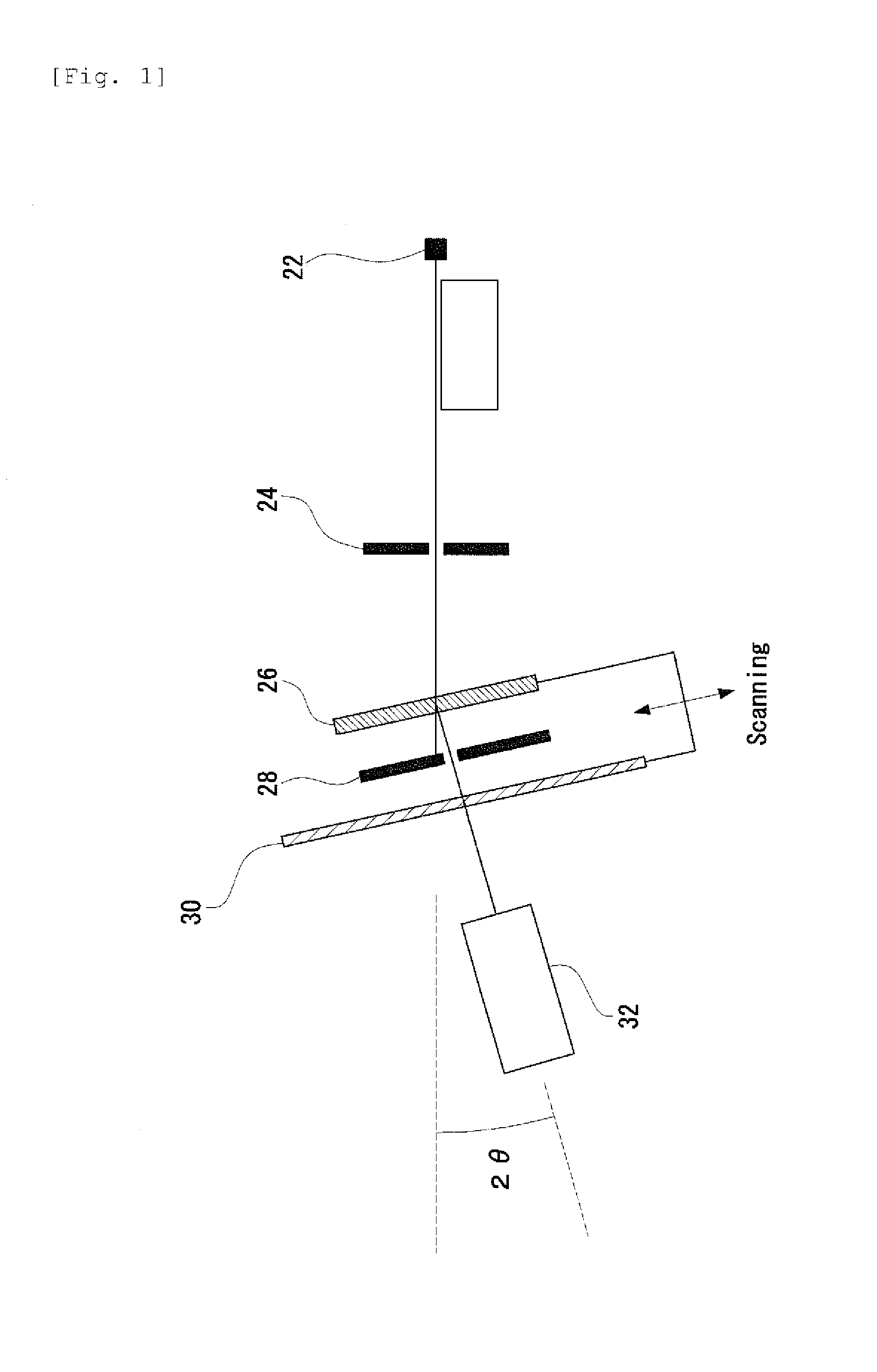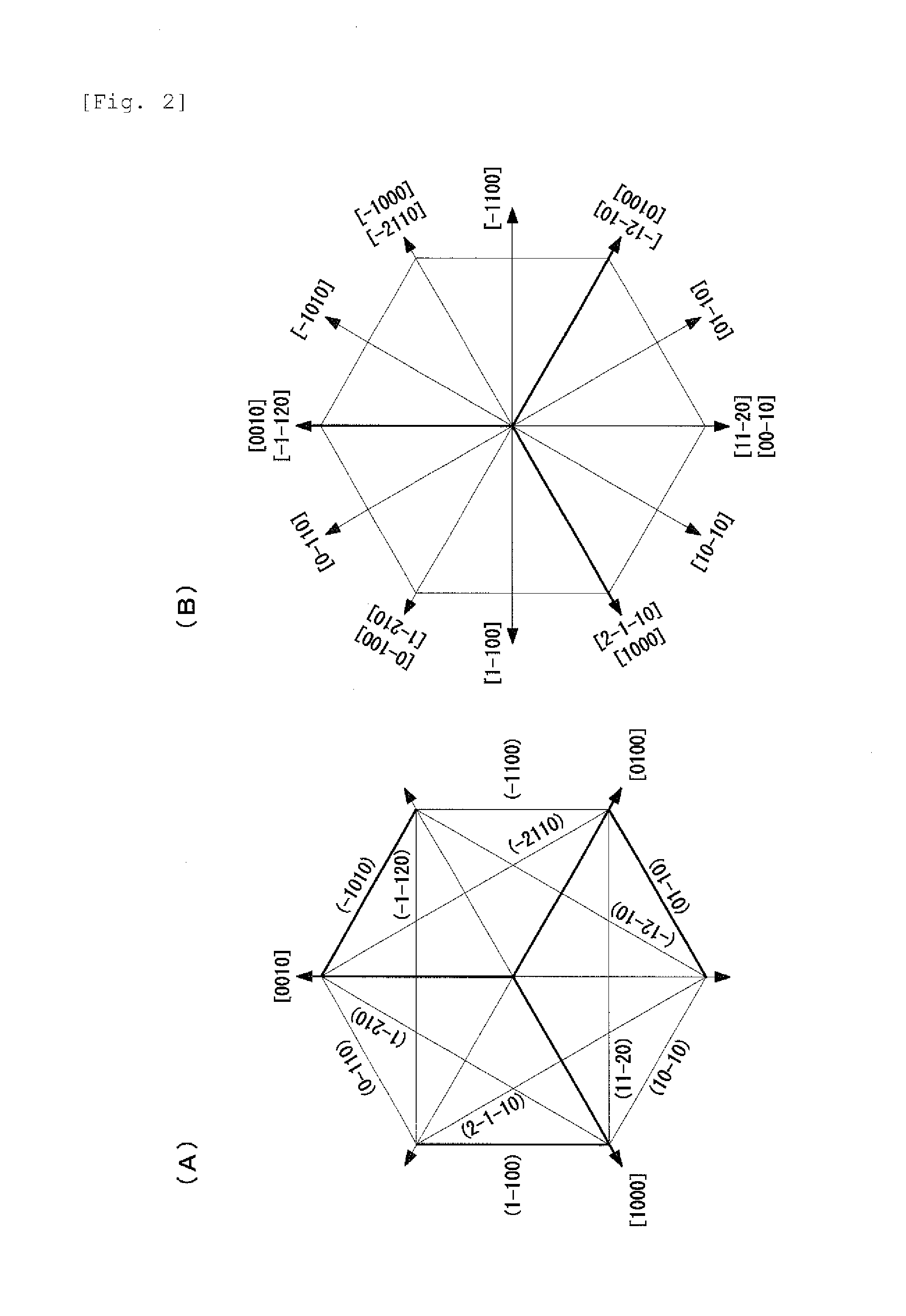Sic single crystal, sic wafer, and semiconductor device
a semiconductor device and single crystal technology, applied in the direction of crystal growth process, crystal growth process, chemistry apparatus and processes, etc., can solve the problems of large number of defects, high dislocation density, threading screw dislocation, etc., to suppress the generation of stacking faults, reduce the number of basal plane dislocations exposed on the wafer surface, and reduce the number of dislocations succeeded by grown crystals or epitaxial films
- Summary
- Abstract
- Description
- Claims
- Application Information
AI Technical Summary
Benefits of technology
Problems solved by technology
Method used
Image
Examples
example 1
[1. Preparation of Specimen]
[0156]A step of growing an SiC single crystal on a growth plane nearly perpendicular to a c-plane, a step of taking out a seed crystal having a growth plane nearly perpendicular to both the last growth plane and the c-plane from the obtained SiC single crystal, and a step of growing an SiC single crystal again by using the seed crystal were repeated. A c-plane offset substrate was taken out from the obtained SiC single crystal and processed to the shape shown in FIG. 6A. A screw dislocation generation region was formed on the X2X3 plane and the X3X4 plane on the growth plane. By using it, an SiC single crystal was manufactured by a sublimation reprecipitation method. The obtained single crystal was cut in nearly parallel (offset angle: 8°) to a {0001} plane, flattening treatment and damaged layer removing treatment were applied to the surface, and thereby a wafer 500 μm in thickness was obtained. The damaged layer was removed by CMP treatment.
[2. Test Met...
PUM
 Login to View More
Login to View More Abstract
Description
Claims
Application Information
 Login to View More
Login to View More - R&D
- Intellectual Property
- Life Sciences
- Materials
- Tech Scout
- Unparalleled Data Quality
- Higher Quality Content
- 60% Fewer Hallucinations
Browse by: Latest US Patents, China's latest patents, Technical Efficacy Thesaurus, Application Domain, Technology Topic, Popular Technical Reports.
© 2025 PatSnap. All rights reserved.Legal|Privacy policy|Modern Slavery Act Transparency Statement|Sitemap|About US| Contact US: help@patsnap.com



